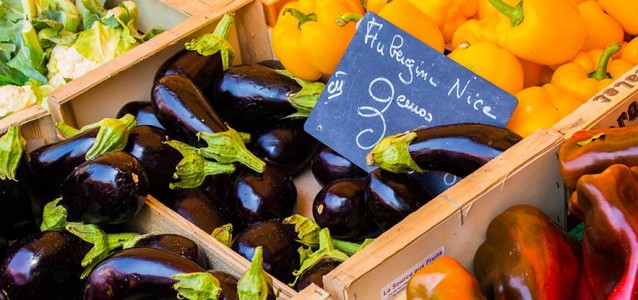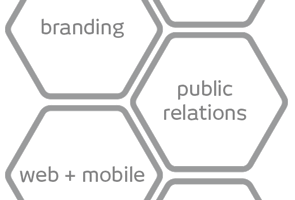Perfect Storm Opportunity
The premise of this article is that there is a significant marketplace opportunity materializing which offers tremendous awareness and sales potential for the right brands. Perhaps you are one of those brands? Let’s dive deeper to find out.
We are witnessing first hand the evolution of Consumer 2.0. This consumer/customer is highly evolved, totally empowered, but completely overwhelmed with the options available in the market. In addition, there are cultural and behavioral shifts taking place, which are of seismic proportions. Specifically, Consumer 2.0:
- Has unfettered access to information online
- Is shopping horizontally across distribution channels
- Is much more active
- Has technology available to self-monitor and assess his/her state of wellness
- Is increasingly interested in maintaining and improving health and wellness
There are new technologies in the marketplace that address bioavailability, delivery methods, and even new metabolic pathways. In addition, new knowledge about human health is emerging. For example, the importance of the gut or GI tract in maintaining good health, or the role of chronic inflammation in overall wellness.
The Gap Between Consumer Knowledge and Product Applications
With the speed of product and technology innovation increasing, most consumers feel like they are drinking from a fire hose when it comes to maintaining or improving good health. Every day brings a new theory or product philosophy. As a result, consumers see a variety of tactics (diet, exercise, supplementation, etc.) but see no way to knowledgeably integrate those into a cohesive and realistic regimen that they can manage or even trust. The marketplace result is that 80% of new products fail, largely because they provide no clearly defined or proven benefits to the consumer. Consumers move through a cycle of trial and rejection that leads to unstable growth and market share gains for most products.
There is a gap in the marketplace between consumer knowledge and consumer understanding and application of that knowledge which brands have not fully bridged. Consumers are empowered, yes. They have tools, yes. And they have some knowledge. But they don’t know how to build anything yet. They must be taught and instructed by industry.
In my opinion, the steps within industry to successfully bridge this gap are:
- Innovation and technology
- Education and dissemination
- Collaboration and partnership
In the face of a rising tide in consumer confusion about health, consumers are returning to what they know: simple, fewer ingredients, less processed foods, and no artificial colors, flavors or sweeteners. Also, less sugar and salt. This burgeoning trend toward “simple” has also fueled the growth in structured diet regimens or philosophies including paleo, vegan, gluten-free, organic, etc. This type of structured diet helps people consume within boundaries and make sense of the health advice madness. Meal kits and delivery programs also play to this audience who want to eat healthier but don’t have time to shop or don’t like to cook.
I believe there are signs all over the place that consumers are moving from an era of Doctor Care (70’s and 80’s) to an era of Self Care (90’s and 2000’s) and now to an era of Custom Care (2010 and beyond). The future is frankly all about custom health care solutions that may be dictated by an individual’s DNA, genetics, lifestyle habits and daily activity level.
So, What Does This Have to Do with Clean Label Claims?
Clean label, sustainability, and transparency are all terms that marketers have coined to “pre-empt” or own this new type of messaging. The problem lies in that most consumers don’t think or talk this way. A recent New Hope Natural Media study cites that 78% if consumers don’t understand what “clean label” means. The same study shows that consumer confusion between Organic and non-GMO is rampant. Yet clean label claims continue to populate packaging at retail and online with almost 25% of U.S. product labels featuring clean label claims according to Innova Market Research.
In essence, clean label, clear label, sustainable, transparent, non-GMO, and many other marketing terms, become consumer shorthand for “healthier and better for you”. That said, the vast majority of consumers don’t really understand and/or differentiate between these terms as they relate to products in the marketplace. Consumers hear the marketing language, and research shows that they are open to new ways of thinking about and purchasing cleaner brands, but consumers do not yet grasp:
- The significance of these descriptors
- How they relate to everyday health and wellness for them personally
Consumers are left largely to grasp at straws for meaning and relevance.
So the “good news” is that consumers are indeed ready to embrace “cleaner product” initiatives. Certainly their aspirations have been heightened, but the “bad” or at least “cautionary news” is that the education process behind clean label initiatives has just begun, and there is a long road ahead for brands to define and differentiate themselves based on these characteristics.
Smart brands that understand this will capitalize on positive consumer sentiment by:
- Researching and defining “marketing language” as it relates to specific, product-related features and benefits
- Fleshing out terms and messaging that consumers can relate to readily and begin over time to associate with their brands over time
It Takes A Village
Brand building in today’s volatile and competitive marketplace is a complex and expensive valuable process. In my opinion, the responsibility for building successful brands has to be shared. Because increasing brand awareness and educating consumers about features and benefits and scientific support is EVERYBODY’S business. Clearly, both manufacturers and suppliers play a key role. As an industry, we are moving from individual silos to increased joint collaboration. It’s not just about clean finished products; it’s about clean sourcing and supply chain practices as well. For raw material providers and marketers, it’s not just about selling ingredients at $X per kilo. Branded ingredient suppliers must add value and embrace a new, more turnkey role. In turn, manufacturers and brand owners must be willing to pay the price for value-added ingredients with a pedigree of quality and proven scientific support. This goes back to my earlier statement about industry steps to bridging the consumer gap between tactical steps and integrated, custom health solutions.
Consumer Segmentation is Key
Modern marketers are learning that audience segmentation plays a critical role in product success. Consumer audiences are increasingly differentiated and display varying buying behaviors and needs. For clean label products specifically and custom health solutions generally, research shows that millennials (ages 18-33) are driving the trends and stimulating demand. This group is all about custom solutions, having options, and they demand more sustainable, transparent products and services.
It’s a new and confusing world out there. But it’s also an exciting one for marketers who are willing to jump in and invest in consumer education and awareness. The marketplace is reflecting a perfect storm of new opportunity. Consumer 2.0 is waiting. It’s your move.
Author:
Jeff Hilton
Co-Founder and CMO


